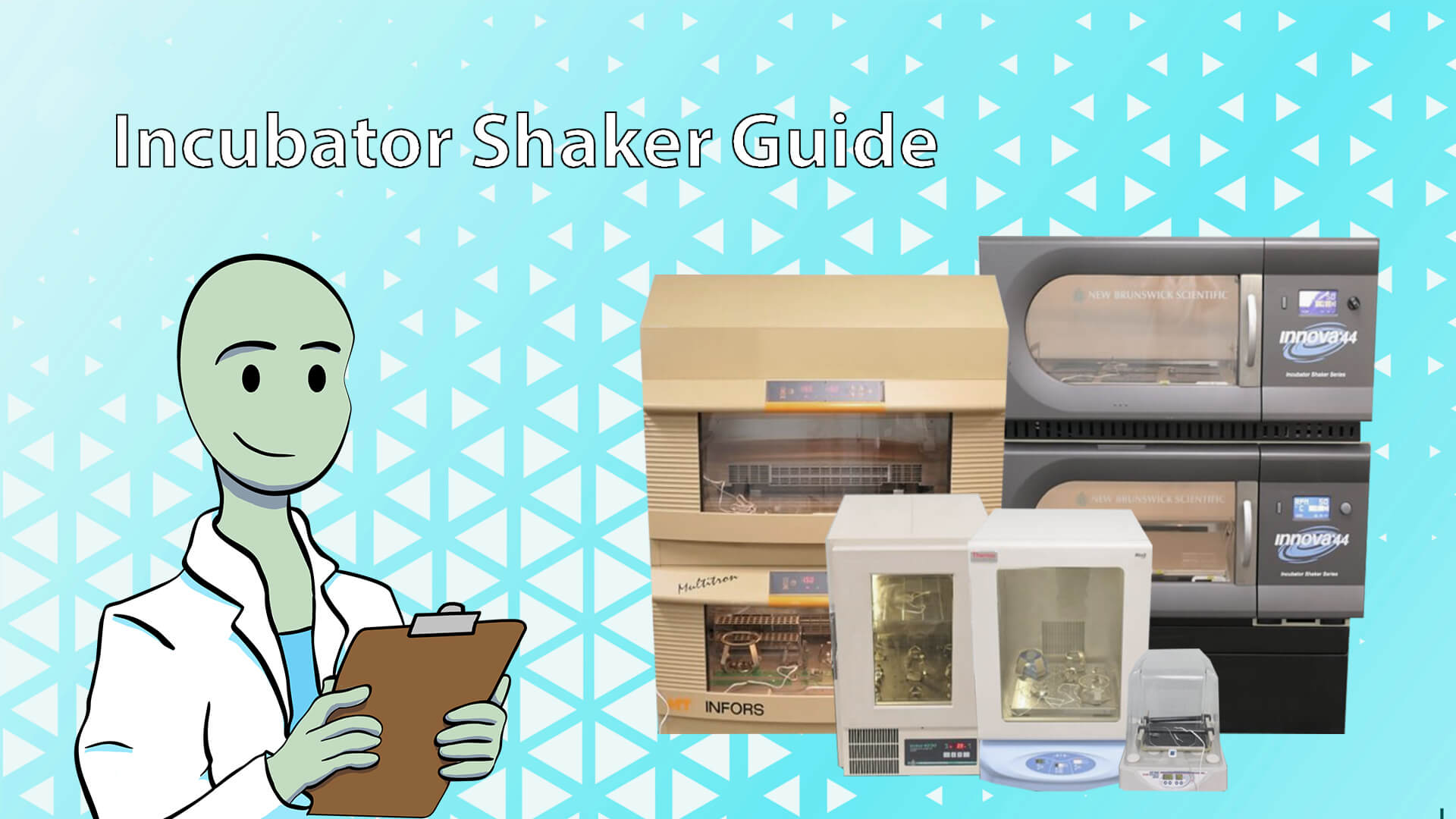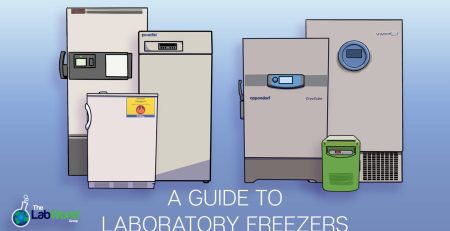
Incubator Shaker Guide
joe2021-09-20T20:56:24+00:00Laboratory applications, such as cell culture and cell tissue samples, benefit from the versatility of incubator shakers, which can conduct both incubation and shaking operations simultaneously. Because they integrate both incubation and shaking procedures, incubator shakers are very helpful and may save you money by eliminating the purchase of a separate incubator and shaker altogether. It also removes the need to manage an incubator and a shaker independently which will save time in processing. Many different models are available, each with a unique set of characteristics suitable for various laboratories and applications. Having this basic understanding of what an incubator shaker is, how it works, and which brands are the best will assist you in gaining more information and insight in the lab.
What is an Incubator Shaker, and how does it work?
When it comes to biological instruments, an incubator shaker does both incubation and shaking simultaneously, where the temperature is controlled by the user. This device for both shaking and temperature-driven applications is perfect for cell culture, fermentation, hybridization, biochemistry, enzyme and cell tissue research, and other applications where temperature and shaking are required. Microbial cells, as well as strains of various organisms, can be generated by using one. It can also be used to stimulate cell development by spreading nutrients and infusing oxygen into a cell culture, which helps the cells grow faster. Shaking incubators may be used for several purposes, including cell aeration, solubility research, and cell culture. Shaking incubators combine the capabilities of a traditional incubator with those of a laboratory shaker to provide high efficiency in a wide range of applications.
When incubator shakers were first developed in the 1960s, they were used for screening various kinds of antibiotics and other bacterial applications. By the 1970s, they enabled the growth of microorganisms under specific environmental conditions. Incubator shakers are still utilized in these applications today. Still, they are specifically employed in many laboratories that do cell culture research. Consequently, since antibiotic manufacturing and administration need both heating and shaking activities, incubator shakers have emerged as the ideal and indispensable equipment in almost all labs today.
Incubator Shaker Properties
Incubator shakers are used for both incubation and shaking of samples. Typical applications that use them are cell culture, fermentation, hybridization, biochemistry, enzyme, and cell tissue research. Various temperature characteristics are found in different incubator shakers. Some can be used for both cooling and heating, while others can only raise the temperature above the ambient temperature. Some have extreme temperature ranges that can reach up to 80°C or more, while others can only achieve 40°C or less. Most incubator shakers with refrigerating capabilities may operate at temperatures as low as a set point temperature of 4°C or 20°C below ambient room temperature. Some even have CO2 capabilities that add CO2 gas into the chamber for specific cell and bacterial growth applications.
Incubator shakers come in various shapes and sizes, including benchtop, medium-sized, and floor models. A benchtop incubator shaker, such as the Thermo Max-Q 4450, can be placed directly on top of a table or countertop. These shakers are ideal for labs that need to perform simple applications and use smaller sample volumes. A medium-sized incubator, like this Innova model, is somewhat bigger than a small incubator and, depending on the size, may be placed on a solid counter or even the floor. Finally, a floor model is installed on the floor and can process a greater volume of material. Floor models, such as Infors and Innova types, can be stacked on top of each other in specific models. The size of the incubator shaker has a direct correlation with the size of the orbit. The orbit of a device decreases in size as the device becomes smaller, and vice versa. The orbit sizes of benchtop incubator shakers are 3 mm and 19 mm, respectively. Incubator shakers in the medium and floor model sizes feature orbit diameters of 25 mm or 50 mm, respectively.
The most common accessory includes sticky mats along with other items like flasks and specialized holders, which may be customized. This includes adding flask holders with capacities ranging from 100 mL to as much as 5000 mL in volume. Medium and floor model incubator shakers can handle sample and fluidic sizes between 2000 mL and 5000 mL. Smaller flasks can be put into any size of incubator shakers. Most versions may easily be customized by adding various specialized holders. Common holders include funnel clamps to small tube racks. The use of smaller incubator shakers will be ideal in labs that need dedicated and specialized lab applications for tiny test tubes and flasks. The use of a medium or floor model incubator shaker will be required if a lab is contemplating several various sized test tubes and flasks, especially with bigger sized flasks under consideration.
Incubator Shaker vs. Lab Shaker in an Incubator: Which is Better?
Many laboratories consider using a shaker inside an incubator rather than purchasing an incubator shaker. However, although heat and humidity resistant lab shakers may be used to do this, there are many advantages to utilizing a specialized incubator shaker instead. Incubator shakers have a longer lifespan, are constructed with higher-quality temperature-resistant materials, are available in various sizes, and provide the convenience of operating just one system rather than two separate ones. Suppose laboratories put a shaker inside an incubator. In that case, they may encounter wiring and electrical difficulties along with compatibility issues with humidity and temperatures, which will result in rapid wear and tear. In models that use CO2 gas, corrosion can occur on shakers within just a few months of minimal use and can seriously damage the shaker’s boards. In an incubator shaker, it is possible to incubate without shaking and to shake without incubating when processing samples. Furthermore, you will not be required to purchase an incubator and shaker separately, which will result in a higher financial cost. If you need to use both processes at the same time or separately, an incubator shaker will be of better use.
The Top Incubator Shaker Brands
Final Thoughts…
With this knowledge, you will be more successful in the lab if you have a fundamental understanding of what an incubator shaker is, how it works, and which brands are the best. When it comes to laboratory applications such as cell culture and cell tissue samples, the flexibility of using an incubator shaker is helpful. Incubator shakers are handy since they combine both incubation and shaking processes into a single unit. It also eliminates the need to manage an incubator and a shaker separately, which may save you both time and money in the long term. Incubator shaker models come in several shapes and sizes, each with its own set of features that make it ideal for a wide range of labs and different applications.
At The Lab World Group, we offer various incubator shakers, all of which come with a 30-day warranty and can be found here. We’re professionals with over 20 years of combined expertise with laboratory products. We always take the extra mile to ensure our customers have a stress-free experience. We are fully transparent with our customers about the equipment and process. Our devices go through an extensive testing procedure to ensure that everything is working correctly and is optimized to manufacturer specifications. We guarantee excellent functioning lab equipment and outstanding customer service when you purchase from us.













